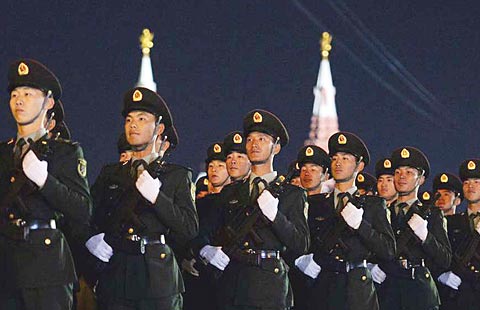
Loosening controls on investment money flows is a key to internationalizing the renminbi, while better safeguards in case of trouble also are needed
There are a few signs that China is determined to step up its efforts to loosen the foreign exchange controls under the capital account this year. That definitely would help advance financial reforms and further integrate China into the global financial system.
At the same time, however, it is also important for the country to enhance its capability and innovate within its capital-account management system to fend off possible impacts from global financial turmoil.
Small steps have been taken in the past few years in opening up China’s capital account, which mainly tracks capital flows incurred by investment. However, the progress is slow when compared with the opening-up of current account, which mainly tracks capital flows incurred by trade. In fact, China’s current account is almost fully liberalized, but restrictions still remain on capital flows under the capital account.
One of these restrictions is that individuals can move only $50,000 a year across the Chinese border, while corporate cross-border investments need government approval.
Fortunately, deregulations in this regard are very likely to happen. According to media reports, the People’s Bank of China plans to launch a trial program that will allow individuals in the Shanghai Free Trade Zone to invest in overseas markets directly for the first time. Under the program known as the Qualified Domestic Individual Investor program, or QDII2, the annual purchase ceiling of $50,000 worth of foreign currency is expected to be scrapped. It is also reported that the program is very likely to be launched in the first half of this year.
Given China’s habit of piloting a policy in a selected region before making it nationwide, things look hopeful that the QDII2 program will eventually become a national policy.
Apparently, the QDII2 program will be a significant reform in the promotion of capital account convertibility, showing that consensus has been reached among major policymakers on the importance and urgency to push for the liberalization of the capital account, one of the major reform tasks in the financial sector. Previously, the opinion supporting a “closed” capital account was popular, especially after China’s capital account controls helped reduce the impact on China of the 2008-09 global financial crisis. Because of divided opinions, the reform on capital account convertibility made little progress in the past few years.
With the QDII2 ready to be launched, it is clear that top policymakers have made up their minds to keep the ball rolling. Central bank Governor Zhou Xiaochuan has said on several occasions in the past few months that China must pick up speed in opening up its capital account.
China’s eagerness is easy to understand, considering the country’s national strategy of promoting the internationalization of its currency, renminbi.
Since 2008, China has made great strides in the globalization of the currency, which is used more and more in foreign trade, thanks to an open current account. However, the renminbi has been used less in cross-border investments since the capital account is still subject to many restrictions. To continue promoting the use of yuan globally, it is necessary to open up the capital account to attract more businesspeople, both inside and outside China, to make investments using yuan.
In addition, an opening-up serves the need to make yuan more acceptable in the international financial system. The International Monetary Fund will decide in the fourth quarter of this year whether to include renminbi in the Special Drawing Rights basket, and one of the key criteria is for China to further liberalize its capital account or have a fully convertible currency. To become an SDR family member, renminbi must be convertible in both current and capital accounts.
Special Drawing Rights are supplementary foreign exchange reserve assets whose value is based on a basket of key international currencies reviewed every five years, according to the IMF
Although it is necessary to liberalize capital account management, it is equally important to minimize risks associated with the opening-up. To that end, China will need to adopt a strategy of loosening micro-management but stepping up macro-management of the capital account. This means China will place a macro control on capital flows and impose interim restriction measures once abnormal money flows pose a threat to financial stability. But on a routine basis, controls on individual deals can be largely removed.
The author is a Shanghai-based financial analyst. The views do not necessarily reflect those of China Daily.








